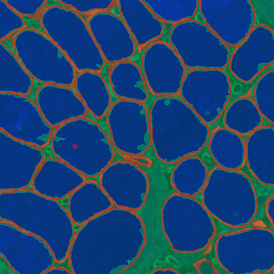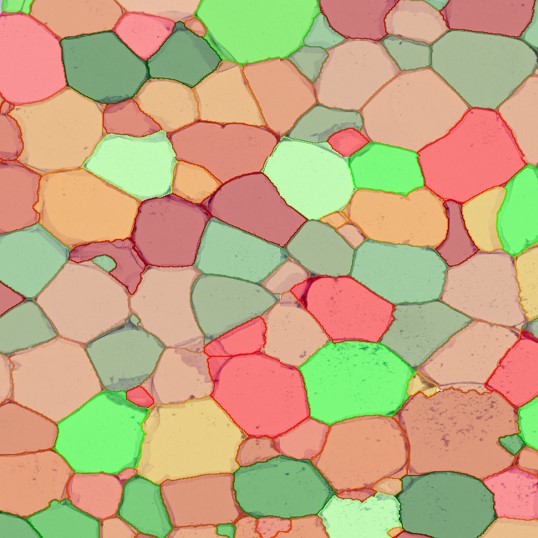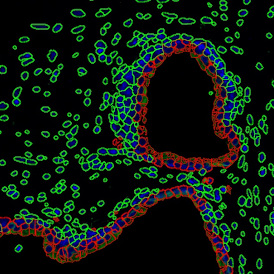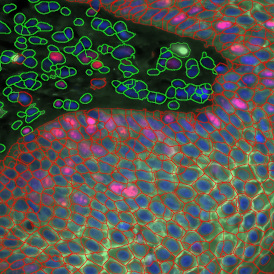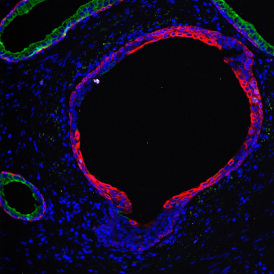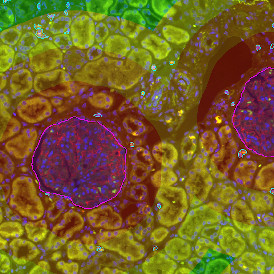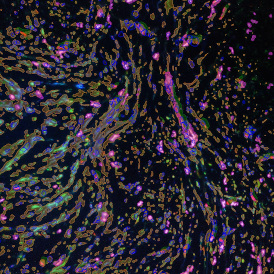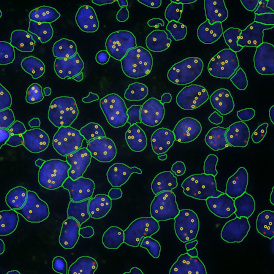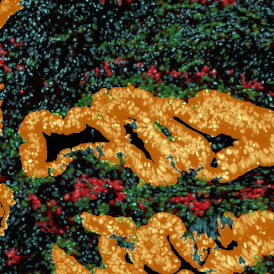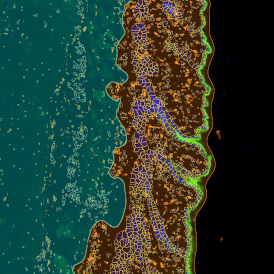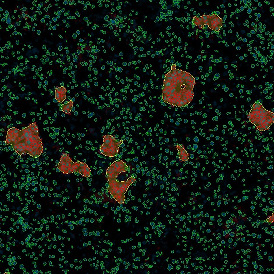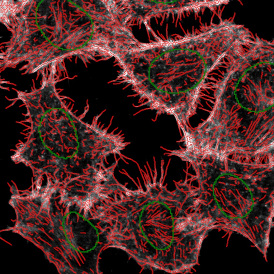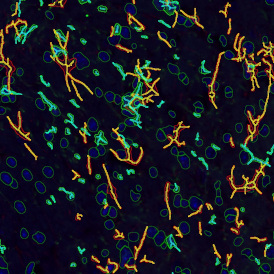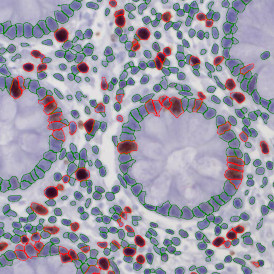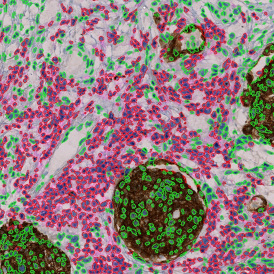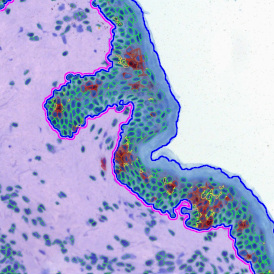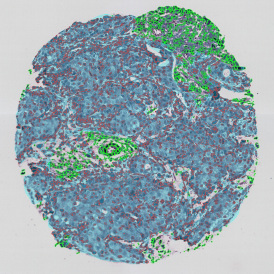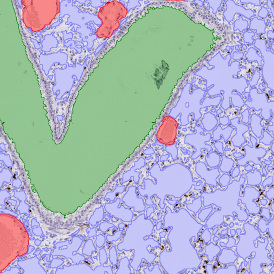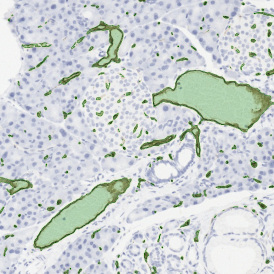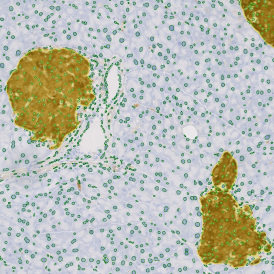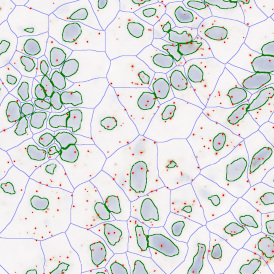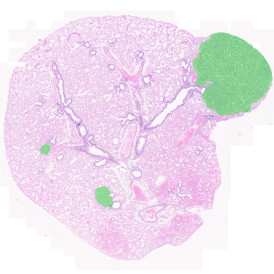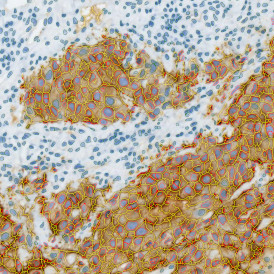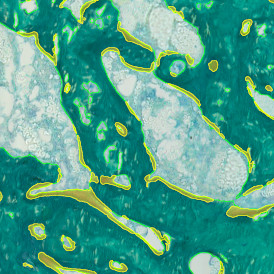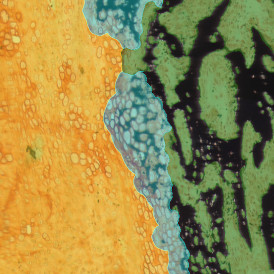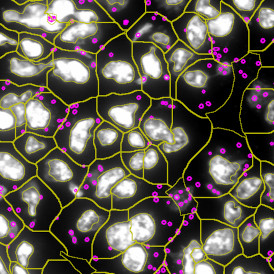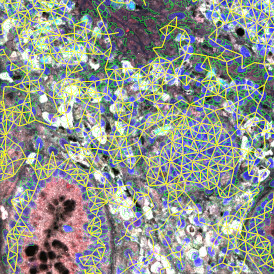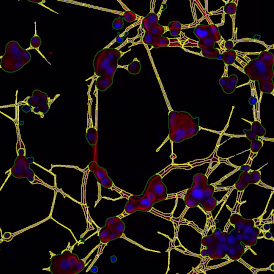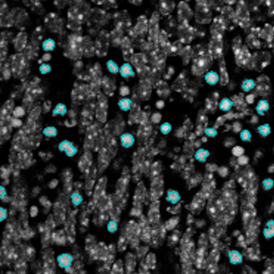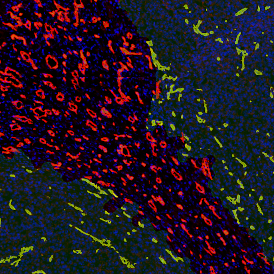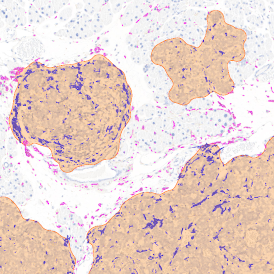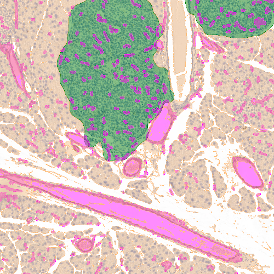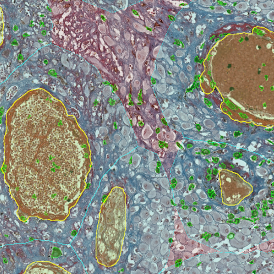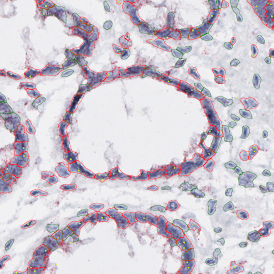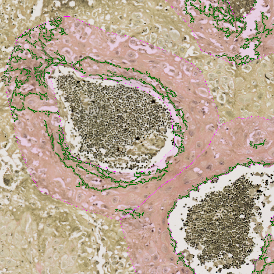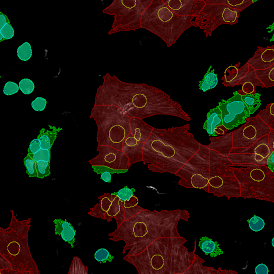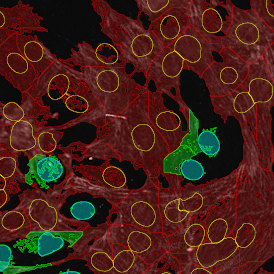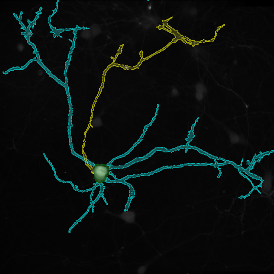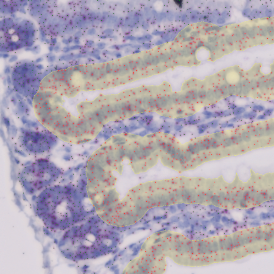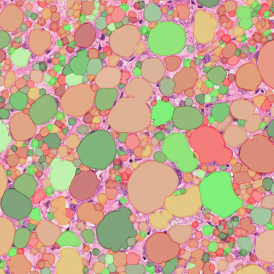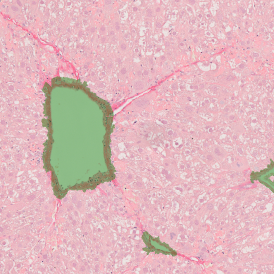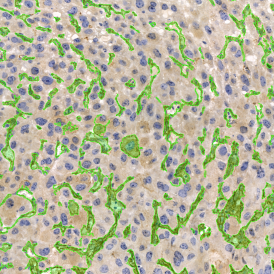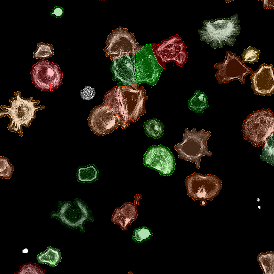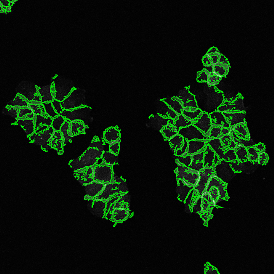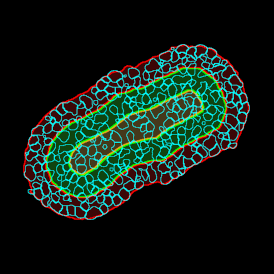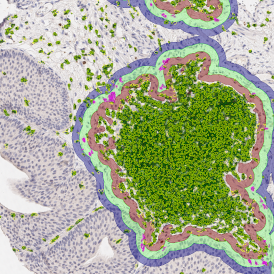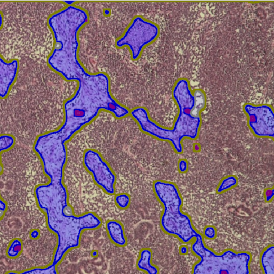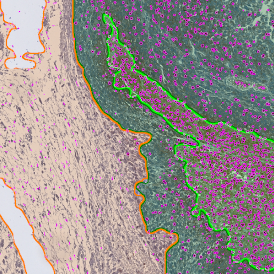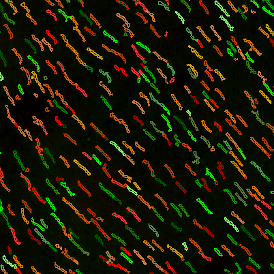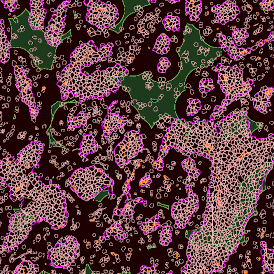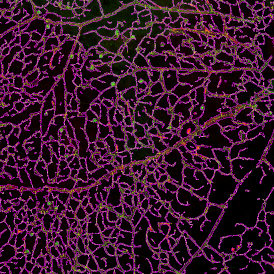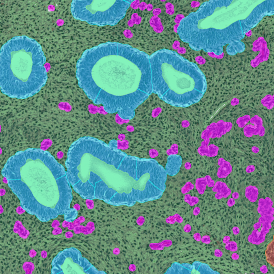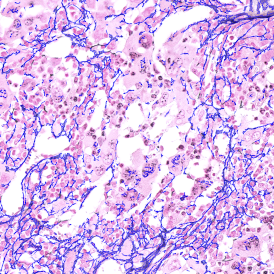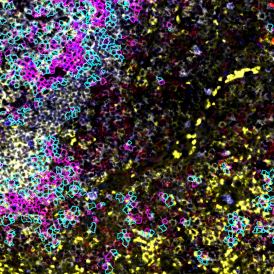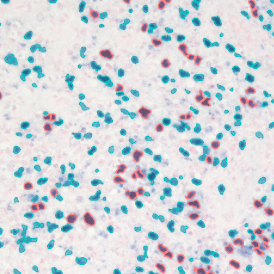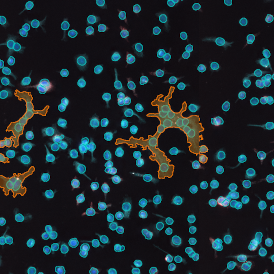17
MAY
17. May 2023
An Intro to Deep Learning in Biomedical Imaging
Modern microscopy methods can provide an overwhelming amount of information in a single experiment. With multiwavelength emissive probes and enhanced 3D or Z stack imaging capabilities, image analysis in biomedical imaging has become an increasingly complex and hard task. However, owing to recent advances, deep learning is frequently used in biomedical image analysis to detect nuclei, phenotypes or morphological substructues in stained tissue sections. This is one of the reasons why deep learning in biomedical imaging has become such a popular tool.1
Deep Learning
Deep learning is a type of machine learning approach that takes inspiration from how biological systems communicate information. The artificial neural networks used in deep learning are similar to the distributed neurons or processing nodes in the brain.
Each node acts as a processing point. A node takes input from the data and uses a set of coefficients to assign a level of importance to the data related to the task being performed. E.g. for tasks involving cell recognition in deep learning in biomedical image analysis, a node may assign a large weight to structures that resemble nuclei.
Nodes can be arranged in layers. A deep learning scheme usually involves an input and output layer as well as hidden layers. The hidden layers take weighted inputs and product output through their functions. Deep learning in biomedical engineering has reached a high level of sophistication in the types of visual images that can be processed in microscopy. Many algorithms can now achieve sufficient performance so that artificial intelligence may be a viable option for medical diagnosis.2
Image Recognition
Image recognition is a key part of deep learning in biomedical engineering. One such application is multispectral cytometry, where the fluorescence or Raman spectrum of suspended objects is measured. By using many of the methods of deep learning in biomedical engineering, it is possible to identify biological targets with multiple labels by using multichannel detection.
TissueGnostics and Deep Learning
In advancing precision medication, tests need to be guided by medical personnel and scientists in the first instance so that accurate results can be used in combination with AI to provide the most effective treatments. One example is Next Generation Sequencing (NGS), which can identify large sections of a person’s genome2, through which genetic variants can be analyzed. Once the genetic variants have been identified, medical personnel can use these results to diagnose and treat a specific disease or disorder. AI has also helped develop genome sequencing and annotations, which utilize pattern-recognizing algorithms to develop suitable treatments.
Another innovative approach to using AI in medicine is tissue cytometry, used specifically for the segmentation of cells and other morphological tissue structures. Cell segmentation is crucial to biomedical research, and for it to be as accurate and efficient as possible, scientists need advanced algorithms. Artificial intelligence plays an essential role in cell segmentation as scientists use machine learning to identify cells in tissue sections3.
TissueGnostics and Precision Medicine
By using deep learning in biomedical image analysis, even more difficult tasks can be analyzed simply. TissueGnostics, recognized expert in image analysis, offers a deep learning-based nuclei segmentation algorithm which needs no or only limited user input to identify nuclei in stained tissue sections, be it IHC or IF based. Since nuclei detection is the basis of most image analysis pipelines, it has to give solid results and this can be achived using deep learning.
Contact TissueGnostics today to see how deep learning approaches can allow images to be analyzed by non-image analysis experts and improve the efficiency of your workflows.
References
- Pan, X., Yang, D., Li, L., Liu, Z., Yang, H., Cao, Z., He, Y., Ma, Z., & Chen, Y. (2018). Cell detection in pathology and microscopy images with multi-scale fully convolutional neural networks. World Wide Web, 21(6), 1721–1743. https://doi.org/10.1007/s11280-017-0520-7
- Xing, F., Xie, Y., Su, H., Liu, F., & Yang, L. (2018). Deep Learning in Microscopy Image Analysis: A Survey. IEEE Transactions on Neural Networks and Learning Systems, 29(10), 4550–4568. https://doi.org/10.1109/TNNLS.2017.2766168

